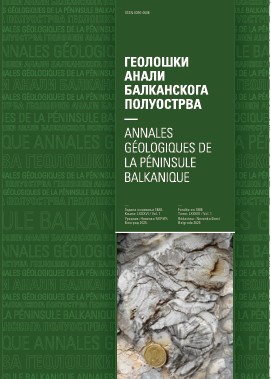Latest Cretaceous mosasaurs and lamniform sharks from Labirinta cave, Vratsa District (northwest Bulgaria): A preliminary note
Abstract
Preliminary descriptions are given of selected specimens from an assemblage of >65 isolated vertebrate remains, collected in 1985 at the Labirinta cave situated between the villages of Drashan and Breste, east of Cherven Briag (Vratsa district, northwest Bulgaria), from strata of late Maastrichtian age (Kajlâka Formation). Recorded are a fragmentary lower jaw of a mosasaurine squamate, Mosasaurus cf. hoffmanni (MANTELL, 1829), with two teeth preserved in situ, as well as two isolated teeth of lamniform sharks, assigned to Squalicorax pristodontus (AGASSIZ, 1843) and Anomotodon sp. Other vertebrate remains in this assemblage include rather poorly preserved fragments of skull and appendicular skeleton of mosasaurs, but it cannot be ruled out that other vertebrate groups (elasmosaurid plesiosaurs) are represented as well. To establish this, the additional material needs to be studied in detail and compared with existing collections; it will be described in full at a later date. A partial phragmocone of a scaphitid ammonite, found associated, is here assigned to Hoploscaphites constrictus (J. SOWERBY, 1817) and briefly described as well. This record dates the Labirinta cave sequence as Maastrichtian, as does the echinoid Hemipneustes striatoradiatus (LESKE 1778); tooth morphology of Squalicorax pristodontus and a find of the pachydiscid ammonite Anapachydiscus (Menuites) cf. terminus WARD and KENNEDY 1993 from correlative strata nearby narrow this down to late, or even latest Maastrichtian. Finally, some remarks on mosasaur and plesiosaur distribution during the Campanian-Maastrichtian across Europe are added.
Copyright (c) 2006 Geološki anali Balkanskoga poluostrva

This work is licensed under a Creative Commons Attribution 4.0 International License.










